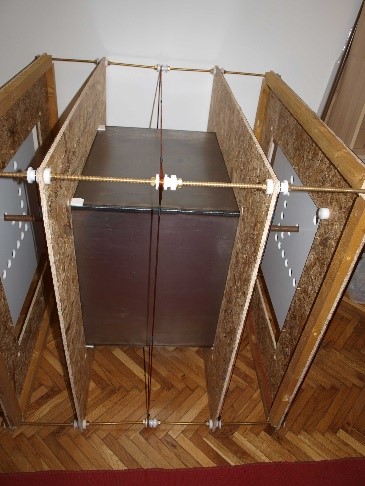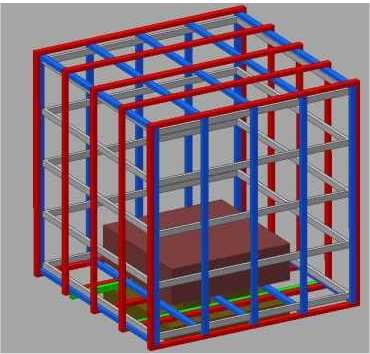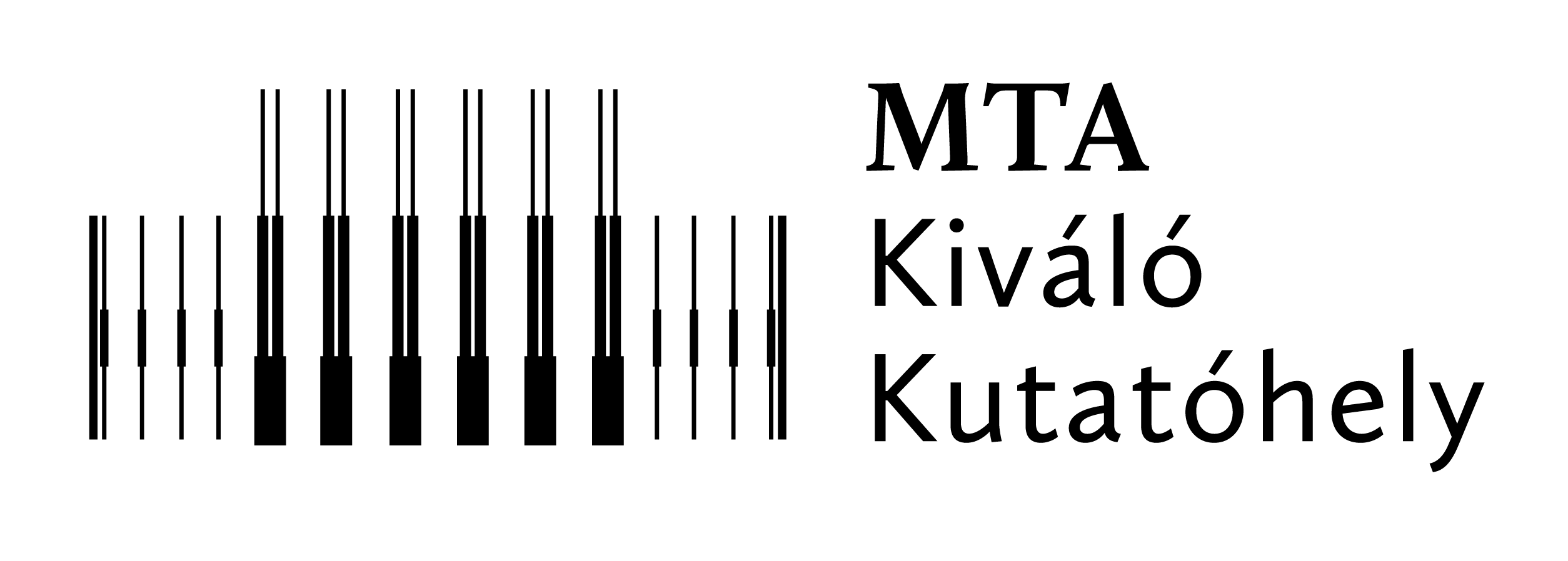2017
The long duration of space exploration projects is presented by one of the longest interplanetary missions, the NASA-led Cassini-Huygens mission which ended on 15th September, 2017. Cassini-Huygens involved 17 countries, including our team. The purpose of the mission was the exploration of Saturn and its Titan moon. The mission-carrying missile was launched in Cape Canaveral in 1997 and reached the Saturn area in 2004. Researchers of our institute and our team participated in the development of EGSE (Electronic Ground Support Equipment) for monitoring equipment and calibration systems, the on-board magnetometer (MAG) and the plasma spectrometer (CAPS).
We are involved in the tender of the Zero Magnetic Laboratory in Fertőboz. Our team was modeling ideas of physicists to select optimal implementation. Fig.1. shows the built model (1:6) of the Ruben-5 coil arrangement for external magnetic field attenuation.


Figure 1. The model of Zero Magnetic Laboratory, and plan of coil system arrangement.
We are participating in the ESA Juice project, which will arrive at Jupiter in 2030, eight years after its start in 2022. It will take measurements for two years around Jupiter. We develop high-reliability power supply units for this program. Juice has been redesigned several times over the past few years due to weight and performance problems, which also affected the power supply unit we developed. In 2017, the engineering models were produced and then delivered to the Swedish Institute of Space Physics in Kiruna.



